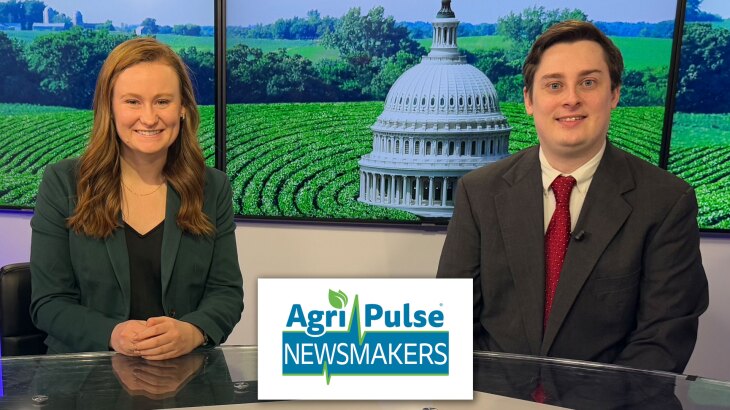National corn condition ratings dropped two points to read 55 percent in the good to excellent categories. Obviously, the ratings reflected the hot temps last week and only scattered rainfall. However, keep in mind that the prospects for moisture look better for the next week to 10 days. In the I-80 Corridor, Nebraska saw the biggest decline of five points while Iowa sank by four. On the other hand, Illinois rebounded by four points due to significant rain in that state. Indiana also picked up a couple points. Outside the I-80 Corridor, we saw large declines in condition in the northern Plains led by North Dakota going down by eight points. Both South Dakota and Minnesota lost seven points.
The national soybean condition rating also dropped two points to land at 52 percent good to excellent. In the I-80 Corridor, Indiana improved by six points due to much needed rainfall. However, Iowa reported a decline of three points while Nebraska went down by two. Here again, outside the Corridor, the northern Plains states and northwestern Corn Belt really struggled led by Minnesota which lost eight points.
Cotton condition ratings nationwide went backwards by five percentage points, dropping to only 41 percent in the good to excellent categories. In the top five producing states, the largest producer, Texas, had a seven-point drop in its rating, leaving it at an extremely low 17 percent. Mississippi’s rating came down by four points. Alabama still has the highest rated crop at 82 percent, but even it declined by three points this week.
The national grain sorghum condition rating sank by five points, dragging it down to 55 percent. The largest producing state of Texas saw the largest drop in its condition rating as well with a reported 16 percent decline since a week ago! Oklahoma’s rating came down by seven points. Kansas managed to improve by two points while in the northern Plains, South Dakota actually improved by six points - somehow bucking the trend of its corn and soybean ratings.
Spring wheat condition nationally came down by seven percentage points since last week’s survey, landing at only 42 percent good to excellent. North Dakota reported a huge drop of 10 points and Washington state trimmed four points from its total. Even though it may not be the biggest producing state, Minnesota had an eye opening drop of 20 points in its rating this week!
USDA provided its first spring wheat harvest report for this year. In it, the national harvest progress is pegged at two percent as the SPRING wheat harvest is just getting underway. South Dakota leads the way in SPRING wheat harvest at 21 percent even though that trails its average pace by five points. Washington state is slightly ahead of its average with 12 percent out of the field.
Winter wheat harvest continues to move further and further north with harvest now considered to be 80 percent done nationally - getting closer to the average pace of 83 percent by this week on the calendar. Kansas is basically done at 95 percent. To its north, South Dakota reports that 74 percent of its WINTER wheat acres are harvested and Nebraksa says 72 percent of its acres are now out of the field. This will be our last WINTER wheat harvest update for this season since the major producing states either have or will be wrapping up.
Pasture conditions were lower in most of the Plains and Rockies states. However, Kansas did show a two-point improvement in its good to excellent rating and in the Rockies, Wyoming managed to post a six point improvement. In the large cattle producing belt of the Plains, Oklahoma reported an eight-point decline in condition while Texas sank by seven points. Further west, though, New Mexico had a huge decline of 17 points in its condition rating. To the far north, North Dakota’s rating went down by 12 points.
In the topsoil moisture deficit report (generally considered to measure the top four inches of soil representing the seed planting and sprouting zone), Washington state keeps a lock on the driest state with 84 percent of its acreage falling in the short to very short moisture categories - down another four points since last week. Texas reported a large drop of 16 points in its moisture availability, pushing it into the second driest spot.
In the subsoil moisture deficit report (considered to measure deep soil moisture down to a few feet where the crop roots would extend downward), Missouri jumped into the top spot with 77 percent of its acres considered to be short to very short on moisture. Texas saw its deficit rating jump by 12 points to place it into a tie for second place with Washington state at 75 percent.
USDA Crop Progress 230731.pdf









